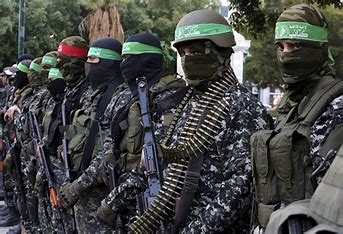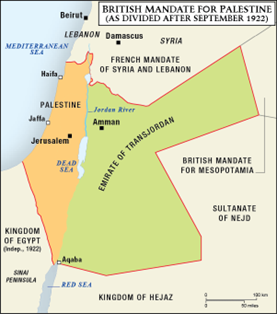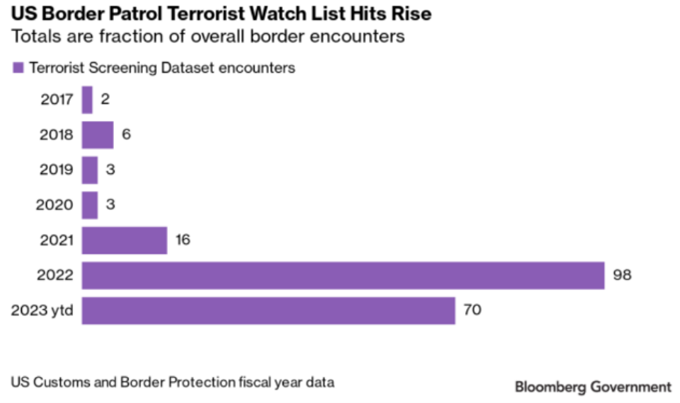Bloodshed in the Middle East

Executive Summary
The fact Hamas has again attacked Israel is not unprecedented, but the manner and implications of this attack are of great concern for the US and the west.
Brief history: no heroes, only victims
Conflict and killing have been a fundamental ingredient of Israeli/Arab relations for over 100 years. Present-day Palestine was controlled by the Ottoman Turks before the First World War. As WW I was winding down, the British negotiated with the Sharif in Mecca for his support in defeating the Turks. Upon hearing this, the French took exception and soon the British began to hold discussions with the French on dividing the area. The Sykes-Picot Agreement (1916) divided the land among the English and the French while declaring Palestine an international zone due to its religious history. However, the agreement violated the British promise to the Sharif. Sykes-Picot led to the creation of six new states – Lebanon and Syria under French rule; Turkey (formerly the Ottoman Empire); Emirate of Transjordan; Palestine, and Iraq (then called Mesopotamia), under British control. Sub-dividing the former Ottoman Empire’s Arab provinces, violating their agreement with the Sharif, and the oppressive rule of law instituted by the British laid the foundation for instability, political turmoil, and an endless cycle of death in the area.[1] By the end of 1917 the British had made promises to the Sharif, the French and with the Balfour Declaration, to the Jewish people. On November 3rd, 1917, Palestinians awoke to find that:

His Majesty’s Government view with favor the establishment in Palestine of a national home for the Jewish people, and will use their best endeavors to facilitate the achievement of this object, it being clearly understood that nothing shall be done which may prejudice the civil and religious rights of existing non-Jewish communities in Palestine, or the rights and political status enjoyed by Jews in any other country. (emphasis added)
Decades of violence followed. The British, realizing their shaky position, halted support to creation of a Zionist state in 1939 as Hitler invaded his neighbors in Europe. The Jewish continued to resist British control and after the world learned of the Holocaust, eventually convinced the Allies of the need for a separate state.
FDR assured the Jews and Arabs in 1945 the United States would not intervene without consulting them. The Brits colonial mandate for Palestine expired in May 1948, and they opposed both a Jewish state and an Arab state in Palestine, as well as unlimited immigration of Jewish refugees to the region. But in May 1946, President Truman approved a recommendation to admit 100,000 displaced Jews into Palestine and in October declared his support for creation of a Jewish state. Fighting between factions continued, at times fiercely, but despite growing conflict between Arabs and Jews, and against the Department of State’s endorsement of a trusteeship, Truman ultimately decided to recognize the state of Israel in 1948.
Since the first Arab Israeli War of 1948, fighting and bloodshed has been the norm, not the exception. The list of conflicts and wars is so extensive that a single source that documents the atrocities and losses of each side is too extensive for review.[2] Both sides have initiated conflict, both sides have committed war crimes.
Recent Attack by Hamas
What is Hamas? After decades of wars, attacks, cease fires, violations, peace plans, blockades, and unrest, Hamas was created in 1987 by Sheik Ahmad Yassin after the First Intifada, an uprising against Israel sparked by a traffic accident that killed four Palestinians. An off shoot of the Muslim Brotherhood, Hamas takes its name from an Arabic Acronym that stands for “Islamic Resistance Movement”. Hamas is also an Arabic word for “Zeal”. In 1988, Hamas declared that freeing Palestine from Israeli occupation was every Muslim’s religious duty. Hamas entered politics in 2005, winning a landslide victory in parliamentary elections in 2006, beating rival Fatah. But the two parties could not work together. Hamas focused on armed resistance, Fatah preferring to negotiate.
After months of fighting between Hamas and Fatah, Hamas took control over the area known now as the Gaza Strip in 2007. Years of violence against Israel continued, with each side launching surprise attacks, abductions of civilians (by Hamas), and the deaths of thousands of Palestinians and hundreds of Israelis. Most recently in 2021 after weeks of tension, Hamas fired over 4000 rockets from Gaza into Israel killing ten civilians and injuring hundreds.[5]
What is unprecedented in this most recent attack is both the scope and planning necessary to launch an operation of this magnitude without tipping off intelligence assets in the region. Without warning Saturday, October 7th on Simchat Torah, one of the most joyous days of the Jewish calendar, Hamas attacked Israeli civilians by air, land, and sea. Israel’s anti-rocket interceptors responded in Jerusalem but within hours hundreds were dead on both sides and many Israelis were taken hostage…50 years and one day from the surprise attack of the 1973 Mideast war. That full-scale Egyptian-Syrian attack on the Jewish holiday Yom Kippur is still remembered as a near disaster for the unprepared Israeli military.
Timing the use of powered gliders, blowing up the barrier wall between Gaza and Israel and the secrecy necessary all point to a new approach by terrorists’ organizations. Hamas makes its own rockets in basements and other makeshift factories in Gaza. Personnel require some amount of familiarization to use powered hand gliders, therefore the lead time necessary for this attack was likely months and not days. Although there are reports that Egypt alerted Israel to the rumblings of an imminent attack, it is unclear who was alerted and if they did not follow up or assumed it would be another demonstration attack vice a full-scale assault. The failure of intelligence will take weeks of investigation and given the Israeli’s penchant for secrecy; we will likely not learn of the details for some time to come.
What is more certain is that terrorist organizations are becoming more disciplined in planning and communicating. The US and Israel have sophisticated electronic surveillance capabilities. Terrorists have known for years about our abilities to intercept cell phone transmissions, text, and emails. To combat this advantage, Hamas likely conducted all discussions in person and had only minimal written orders, disseminated by trusted agents to commanders of various attack phases. Historically we would assume human intelligence assets could intercept and report these discussions. In years past there have been discoveries, and beheadings, of Mossad informants by Hamas and other terrorist groups. That said, many factors likely contributed to the failure including basic over tasking of current capabilities, the lack of any signals or electronic tips that would normally be used to focus human assets, and leadership distractions in the Netanyahu government.
Should the US be worried?
The United States should be concerned about both the immediate issue of a widening conflict and the longer-term implications of this attack.
In the short term the US must double down on weapons production immediately. We have sent thousands of tons of munitions to Ukraine, depleting our own stocks. We will likely send more support to Israel as needed, first from in country stockpiles (US owned but stored in Israel) and then from other sources. In a letter to congressional leader’s days before the attack by Hamas, the Pentagon warned Congress about funds to replace weapons the U.S. has sent to Ukraine. Pentagon comptroller McCord told the House and Senate only $1.6 billion is left of the $25.9 billion provided to replace U.S. weapons sent to Kyiv and urged them to replenish funding. The Congress passed a last-minute stopgap funding bill September 30 to avert a government shutdown, but it did not include any new aid for Ukraine.
One source of munitions not recognized so far is the Gerald Ford Strike Group. This stop gap would not be enough for an extended conflict. But increasing production is not a short-term undertaking. Some limited expansion of current production lines has been in the works for many months because of the war in Ukraine. The easiest and least impactful are to extend the shifts of workers on current lines, adding time and some materials to produce more weapons.
However, to make a substantial increase requires adding shifts to production lines (most work with only one full time shift) and increasing the flow of raw materials and subcomponents. Hiring and training new production crews takes time, as does increasing the material supply chain. Subcomponents of weapons like circuit boards, fuses, sensors all have their own production lines and supply chains. All of these would need to increase output in a coordinated fashion in order to increase production of end items needed for combat operations. This process can normally take years, but even in an emergency will require many months.
Also in the short term is the need to ensure the conflict ends as soon as possible and does not expand. Israel is going to go door to door, house to house, to root out Hamas and their infrastructure as well as try to rescue hostages. This is a complex undertaking that the US and the west will likely support, but indirectly. Expansion into Syria seems to have already occurred with attacks on two airports. Iran’s involvement is still unclear, and since an attack on Iran would require a mission of over 1,000 miles each way and overflight of US forces, it is less likely.
In the long term the west must acknowledge that our reliance on electronic signals intelligence has left a vulnerability that terrorists can exploit. In 2017 the Wall Street Journal, citing intelligence officials, noted that during the Obama administration the U.S. government’s reliance on electronic means of gathering information made up anywhere from 60 to 75 percent of incoming intelligence. Without context from intelligence sources provided by HUMINT (i.e., actionable intelligence), it is difficult to assess electronic signals to predict hostile actions.
With the resurgence of ISIS and Al-Qaeda in the middle east; growth of terrorist factions in Africa; and the lack of insight into the types of persons entering the US through our southern border; the risk to US military and civilian personnel and infrastructure is growing daily. If terror groups continue to avoid electronic means of communication to plan and execute attacks, we will be unable to interdict in advance, and be forced to only react after an attack. A successful defense requires a proactive component. The US must focus on what is important. It remains to be seen if US politics will finally take a back seat to defending the homeland. Given our short attention span, change is unlikely.

 Learn more about the author, Advisory Board member and retired U.S. Air Force Major General Michael Snodgrass.
Learn more about the author, Advisory Board member and retired U.S. Air Force Major General Michael Snodgrass.



